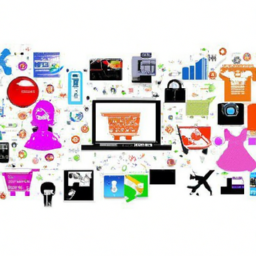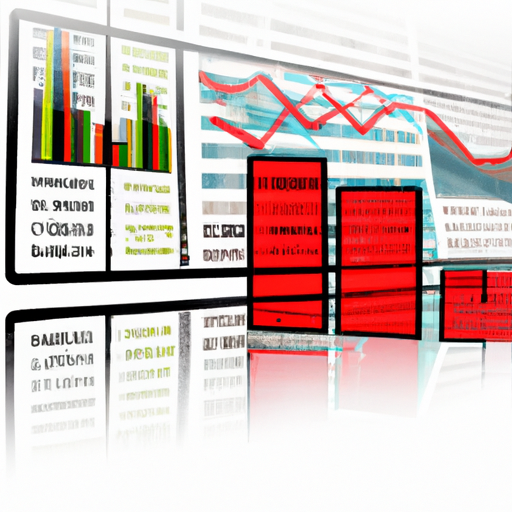Payments Industry Trends
In this article, you will explore the latest developments and shifts in the payments industry. Discover how technology is shaping the way we make transactions, from the rise of contactless payments to the increasing popularity of digital wallets. Explore the growing importance of cybersecurity in protecting sensitive financial information, and gain insights into the evolving landscape of payment methods. Whether you’re a business owner or a consumer, staying informed about these payments industry trends is crucial in navigating the ever-changing world of finance. So, let’s dive in and uncover the exciting developments in the world of payments!

Table of Contents
Contactless Payments
Increased adoption of contactless payments
Contactless payments have seen a significant increase in adoption in recent years. With the convenience and speed they offer, more and more people are opting to make contactless payments for their everyday transactions. Whether it’s tapping a card on a payment terminal or using a mobile wallet, the simplicity of contactless payments has made them a popular choice among consumers.
Implementation of new technologies
The implementation of new technologies has played a key role in the growth of contactless payments. Near Field Communication (NFC) technology, in particular, has been instrumental in enabling contactless payments. With NFC, users can simply tap their cards or mobile devices on payment terminals to complete a transaction, eliminating the need for physical contact or the insertion of cards into terminals. This technology has made payments faster, more convenient, and more secure.
Advancements in NFC technology
Advancements in NFC technology have further enhanced the capabilities of contactless payments. With improved encryption and authentication protocols, NFC transactions have become more secure, reducing the risk of fraud and unauthorized transactions. Additionally, the range of devices that support NFC has expanded, making contactless payments accessible to a wider audience. As more businesses invest in NFC-enabled payment infrastructure, the use of contactless payments is expected to continue to grow.
Mobile Payments
Growth of mobile wallet usage
Mobile payments have experienced significant growth in recent years, driven by the widespread adoption of smartphones and the convenience they offer. With mobile wallets, users can store their payment information securely on their devices and make payments by simply tapping or scanning their phones at payment terminals. This convenience has led to a surge in the usage of mobile wallets, with consumers increasingly relying on their smartphones for everyday transactions.
Integration of mobile payment options
The integration of mobile payment options into various apps and platforms has contributed to the growth of mobile payments. From retail apps to ride-sharing services, many businesses now offer mobile payment options to their customers, making it easier than ever to make a purchase or pay for a service with a smartphone. This integration has streamlined the payment process and has made mobile payments a seamless part of everyday life for many consumers.
Rise of peer-to-peer mobile payments
Another trend in mobile payments is the rise of peer-to-peer (P2P) mobile payment services. These services allow users to send money to friends, family, or even strangers directly from their mobile wallets. Whether it’s splitting a bill at a restaurant or sending money to a relative in another country, P2P mobile payments offer a convenient and instant way to transfer funds. As P2P mobile payment services become more widely available and user-friendly, their popularity continues to grow.
Cryptocurrencies in Payments
Acceptance and integration of cryptocurrencies
Cryptocurrencies have gained increasing acceptance and integration into the mainstream payment industry. As more businesses and merchants recognize the benefits of cryptocurrencies, they are starting to accept digital currencies as a form of payment. This acceptance has expanded the options available to consumers, allowing them to make purchases using their preferred cryptocurrency.
Bitcoin as a popular payment option
Bitcoin, the most well-known cryptocurrency, has emerged as a popular payment option in recent years. Its decentralized nature and potential for anonymity make it an attractive choice for those seeking an alternative to traditional payment methods. Bitcoin transactions are conducted using blockchain technology, which ensures security and transparency. Some businesses now exclusively accept bitcoin, while others offer it as an alternative payment option alongside traditional methods.
Development of blockchain-based payment platforms
The development of blockchain-based payment platforms is revolutionizing the payments industry. Blockchain technology allows for secure and decentralized transactions, eliminating the need for intermediaries and reducing transaction costs. These platforms offer faster and more transparent payment processes, making them an attractive option for businesses and consumers alike. As the technology continues to evolve, we can expect to see further advancements in blockchain-based payment platforms.

Digital Wallets
Expansion of digital wallet services
Digital wallet services have expanded significantly in recent years, offering consumers a convenient way to store their payment information and make purchases. Digital wallets allow users to securely save their credit/debit card information, loyalty program details, and even gift cards in one place, reducing the need to carry physical cards. This expansion of digital wallet services has made it easier for consumers to manage their finances and streamline their payment experiences.
Integration of loyalty programs
One of the key benefits of digital wallets is the integration of loyalty programs. Many digital wallet services now allow users to store and access their loyalty cards or reward points directly on their smartphones. This integration eliminates the need for physical loyalty cards and makes it easier for consumers to redeem rewards and earn points with their purchases. By combining payment convenience with loyalty program integration, digital wallets offer a seamless and rewarding experience for consumers.
Enhanced security features
Digital wallets prioritize security to protect users’ payment information. They employ various security measures such as encryption and tokenization to safeguard sensitive data. Additionally, biometric authentication methods like fingerprint or facial recognition add an extra layer of security, ensuring that only authorized users can access the wallet. These enhanced security features provide users with peace of mind when making digital wallet payments, further boosting their adoption.
Biometric Authentication
Increased use of biometric authentication
Biometric authentication, which uses unique physical or behavioral characteristics for identity verification, has seen increased use in the payments industry. Biometric authentication methods such as fingerprint and facial recognition are being integrated into payment systems, providing a secure and convenient way to authenticate transactions. By utilizing biometric data, payment systems can ensure that only authorized individuals can access and complete payment transactions.
Advancements in fingerprint and facial recognition
Advancements in fingerprint and facial recognition technology have made biometric authentication more accurate and reliable. Fingerprint scanners and facial recognition systems have become faster and more sophisticated, enabling seamless and secure authentication in real-time. These advancements not only provide a convenient user experience but also enhance the security of payment transactions, reducing the risk of unauthorized access or fraud.
Improved security and convenience
Biometric authentication offers improved security and convenience for both consumers and businesses. By replacing traditional passwords or PINs, which can be easily forgotten or stolen, with biometric data, the risk of unauthorized access or identity theft is significantly reduced. Biometric authentication also eliminates the need for consumers to remember multiple passwords or carry additional hardware, making the payment process more streamlined and user-friendly.
Omnichannel Solutions
Seamless integration between online and offline payments
Omnichannel solutions aim to provide a seamless payment experience by integrating online and offline payment channels. With the increasing popularity of e-commerce, consumers expect to have the same level of convenience and flexibility when making online purchases as they do when shopping in a physical store. Omnichannel solutions enable retailers to offer a consistent payment experience across all channels, allowing customers to seamlessly transition between online and offline transactions.
Unified customer experience
Omnichannel solutions focus on creating a unified customer experience by integrating multiple payment methods. Whether a customer shops in-store, online, or through a mobile app, their payment preferences and information are seamlessly synchronized across all channels. This unified experience ensures that customers can complete their transactions smoothly and efficiently, without disruptions or inconsistencies. By providing a cohesive experience, businesses can build trust and loyalty with their customers.
Integration of multiple payment methods
Omnichannel solutions also involve the integration of multiple payment methods, allowing customers to choose how they want to pay. From traditional credit/debit cards to mobile wallets and even cryptocurrencies, businesses are diversifying their accepted payment options to cater to a wider range of customer preferences. By offering multiple payment methods, businesses can accommodate different customer needs and increase their chances of making a successful sale.
Data-driven Insights
Utilization of big data analytics
The payments industry is increasingly leveraging big data analytics to gain valuable insights into customer behavior and preferences. By analyzing vast amounts of transaction data, businesses can identify patterns, trends, and correlations that can inform their decision-making processes. Big data analytics provides valuable insights into consumer spending habits, allowing businesses to optimize their marketing strategies, personalize their offers, and improve customer satisfaction.
Improved understanding of customer behavior
Through data-driven insights, businesses can develop a better understanding of customer behavior. By analyzing transaction data, businesses can identify which products or services are popular, which demographics prefer certain payment methods, and even predict future consumer behavior. This improved understanding allows businesses to tailor their offerings to meet customer needs and preferences, ultimately improving the overall customer experience.
Personalized offers and recommendations
Data-driven insights also enable businesses to offer personalized offers and recommendations to customers. By understanding customer preferences and purchase history, businesses can create targeted promotional campaigns, recommend relevant products or services, and offer personalized discounts or rewards. This level of personalization enhances the customer experience, making customers feel valued and more likely to engage with the business.
Artificial Intelligence in Payments
Integration of AI-powered chatbots
Artificial Intelligence (AI) has made its way into the payments industry through the integration of AI-powered chatbots. These chatbots provide automated customer support, allowing businesses to handle customer inquiries and resolve issues in real-time. AI-powered chatbots can answer frequently asked questions, provide product recommendations, and even assist with payment-related tasks. By leveraging AI, businesses can provide seamless and efficient customer support, improving the overall payment experience.
Automation of customer support
AI technology enables the automation of customer support processes, reducing the need for manual intervention. With AI-powered systems, businesses can automate common customer support tasks, such as verifying transactions, detecting fraud, and handling disputes. This automation not only increases efficiency but also improves accuracy and reduces response time. By automating customer support processes, businesses can provide faster and more reliable support, resulting in higher customer satisfaction.
Fraud detection and prevention
AI technology has also been instrumental in improving fraud detection and prevention in the payments industry. AI-powered systems can analyze large volumes of transaction data in real-time, identifying patterns and anomalies that may indicate fraudulent activity. By continuously analyzing data and learning from previous incidents, AI-powered systems can enhance fraud detection capabilities and proactively prevent fraudulent transactions. This technology is crucial in protecting both businesses and consumers from financial losses and maintaining the integrity of the payment ecosystem.
Regulatory Changes
Introduction of new payment regulations
Regulatory changes have had a significant impact on the payments industry, shaping the way payments are conducted and protecting consumer interests. Governments and regulatory bodies worldwide have introduced new payment regulations, aimed at enhancing security, transparency, and consumer protection. These regulations cover various aspects such as data privacy, anti-money laundering (AML), and customer authentication, ensuring that payment processes adhere to legal and ethical standards.
Enhanced security and customer protection
Regulatory changes in the payments industry have focused on enhancing security and customer protection. With the rise of cyber threats and data breaches, governments have imposed stricter regulations to safeguard consumer information and mitigate the risk of fraud. Mandatory security measures, such as two-factor authentication and encryption, have been introduced to protect sensitive payment data. Additionally, regulations aim to ensure fair and transparent practices, prohibiting discriminatory pricing or hidden fees. These efforts provide consumers with peace of mind when conducting payment transactions.
Impact on industry practices
Regulatory changes in the payments industry have had a significant impact on industry practices. Businesses have had to adapt their payment processes to comply with new regulations, implement additional security measures, and enhance customer protection. While these changes may initially require time and resources, they ultimately contribute to building a more robust and trustworthy payment ecosystem. Additionally, regulatory changes have spurred innovation, as businesses work to find compliant solutions that meet consumer demands and regulatory requirements simultaneously.
Sustainable Payments
Growing focus on sustainability
There is a growing focus on sustainability within the payments industry, as businesses recognize the need to reduce their environmental impact. The production and disposal of traditional payment methods, such as paper checks and plastic cards, have significant environmental implications. By embracing sustainable payment solutions, businesses can contribute to reducing their carbon footprint and promoting environmentally friendly practices.
Green payment solutions and initiatives
Green payment solutions and initiatives are emerging to address the industry’s sustainability concerns. From digital payments to electronic invoicing, these solutions aim to minimize the use of paper and physical resources. Electronic transactions reduce the need for paper checks and receipts, minimizing waste and deforestation. Additionally, initiatives like carbon offset programs allow businesses to offset their environmental impact by investing in renewable energy or conservation projects.
Reducing environmental impact
By adopting sustainable payment solutions, businesses can actively reduce their environmental impact. Digital payments, such as mobile wallets and online transactions, eliminate the need for paper-based payment methods. This shift not only reduces waste but also decreases energy consumption associated with the transportation and processing of physical payments. By embracing sustainable practices, businesses contribute to a greener future while still delivering efficient and secure payment services.
In conclusion, the payments industry is witnessing a wave of transformative trends and advancements. Contactless payments have seen increased adoption, driven by new technologies and advancements in NFC technology. Mobile payments are growing rapidly, with the integration of mobile payment options and the rise of peer-to-peer mobile payments. Cryptocurrencies are being accepted and integrated into the mainstream payment industry, with Bitcoin emerging as a popular payment option. Digital wallets are expanding their services, integrating loyalty programs, and enhancing security features. Biometric authentication is on the rise, offering improved security and convenience through advancements in fingerprint and facial recognition. Omnichannel solutions enable seamless integration between online and offline payments, providing a unified customer experience. Data-driven insights are revolutionizing the industry, offering improved understanding of customer behavior and enabling personalized offers and recommendations. Artificial Intelligence is powering chatbots, automating customer support, and enhancing fraud detection and prevention. Regulatory changes are shaping the industry, enhancing security, and customer protection. Lastly, sustainability is becoming a focus, with the adoption of green payment solutions and initiatives aimed at reducing the environmental impact. With these trends and advancements, the payments industry is evolving to meet the changing needs and expectations of consumers, paving the way for a more convenient, secure, and sustainable payment future.






